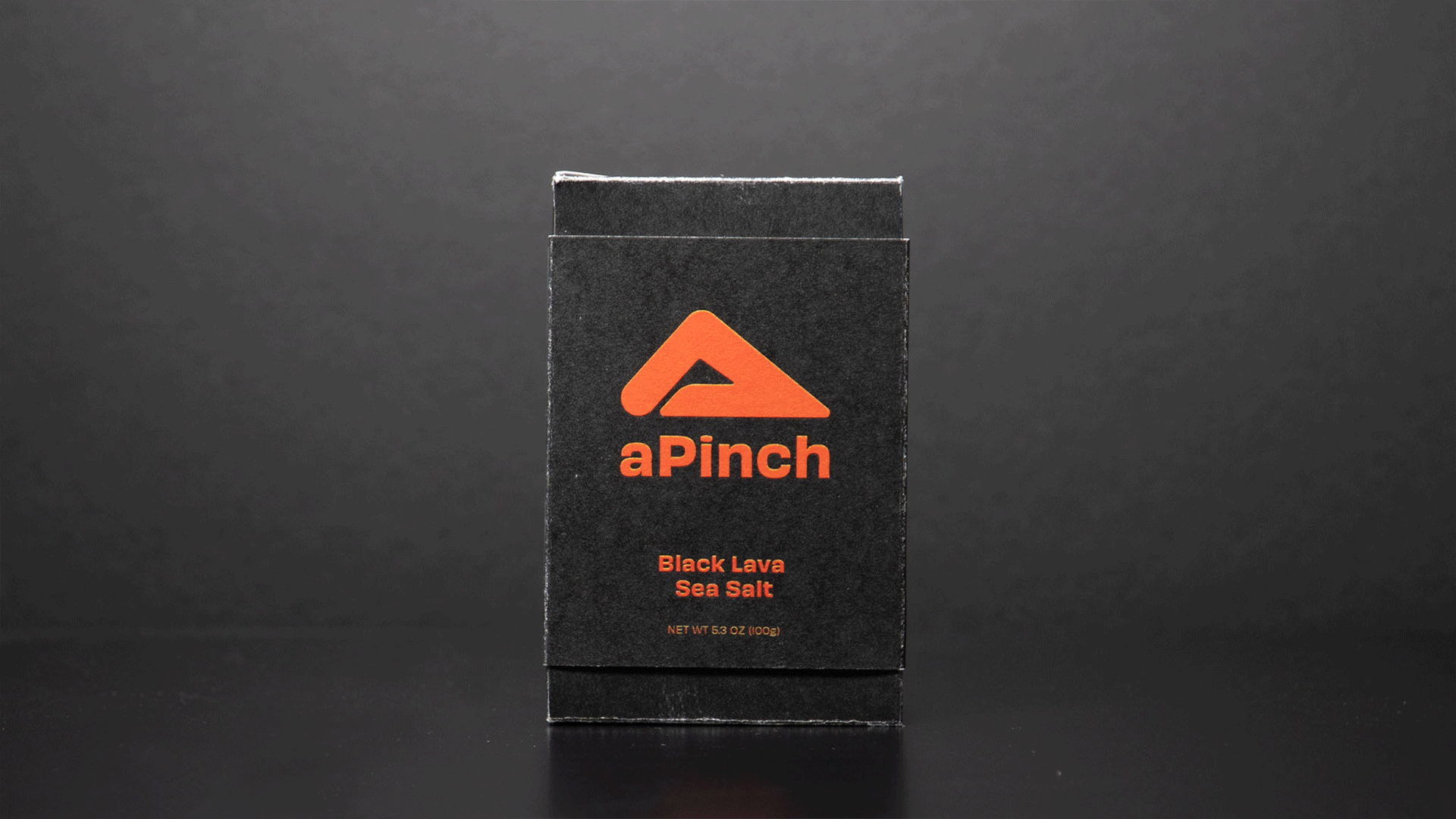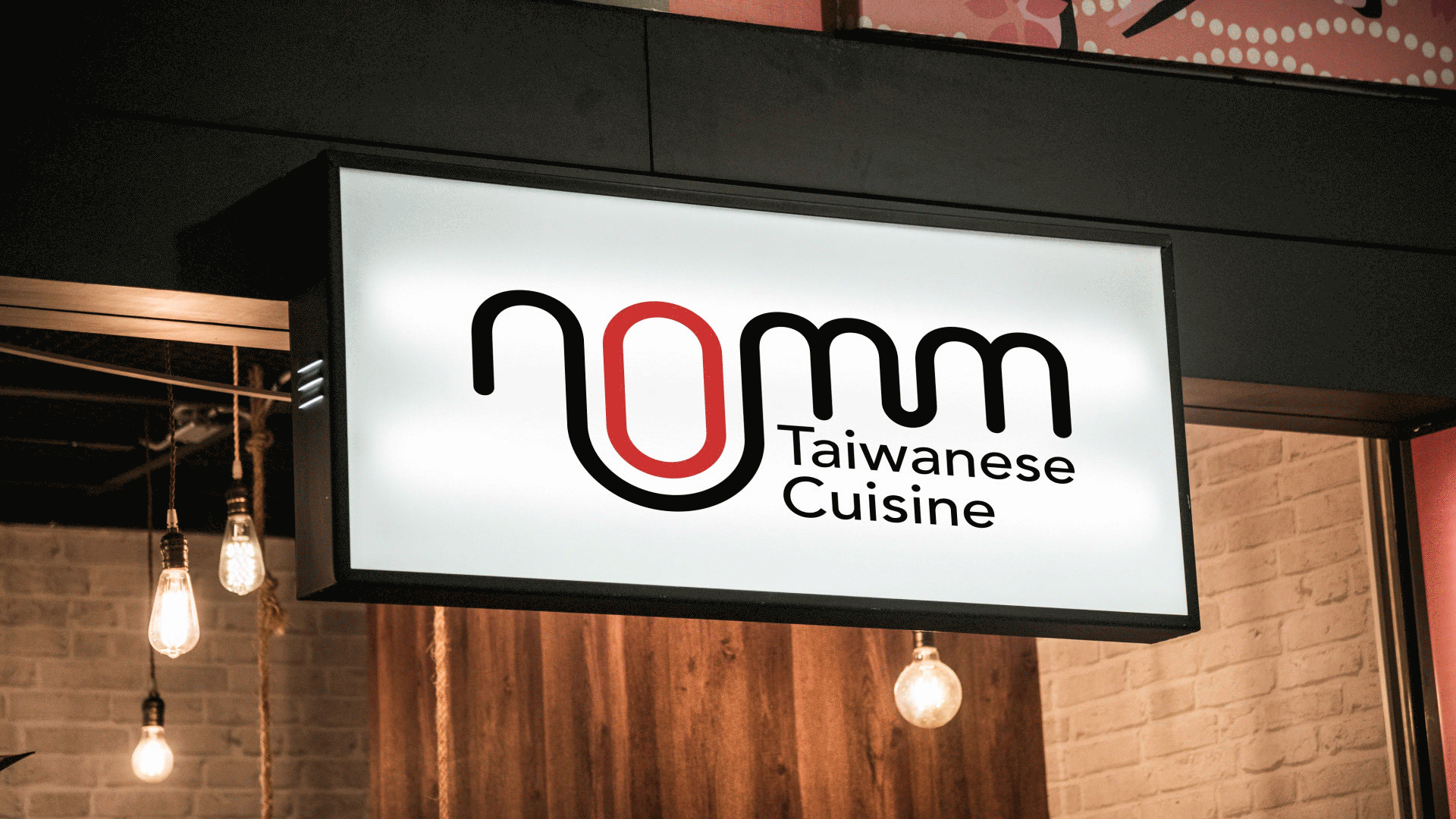HISTORY OF POP UP
TIMELINE EXHIBITION
Walking Through History
Pop up books have been around for centuries, but they haven't always been targeted toward children. The History of Pop Up exhibition showcases the evolution of pop up techniques and their gradual transformation from guiding monks to entertaining kids.
The exhibition consists of seven rooms, each representing a different period where a new technique was introduced. The structure of the exhibition itself is inspired by a tunnel book, which is also featured in one of the rooms.
Exploring the Exhibition
I wanted this timeline exhibition to be enjoyable for both children and adults, where they can learn by interacting with tangible objects. My initial idea was to set up rooms in a way that visitors would snake through them, with each artifact scaled up from book size to a larger scale so people could look at how it was constructed. However, I wasn't particularly satisfied with this approach because it restricted the order in which people could view the artifacts. The layout dictated a clear path, limiting how people could explore the exhibition.
While looking at my initial idea, I was drawn to the tunnel book shape I had sketched on the left. I decided to use this shape as the foundation for the exhibition. Each room would represent a different time period, displaying the corresponding artifact with a large scale interactive element. As visitors enter the main room, they will encounter the large tunnel book strip, giving them the freedom to choose which period to explore first and to easily revisit any room at their own pace.
Typefaces
Marvin by Patrick Griffin is used for the title and large text because of its fun, dynamic style. Since the typeface has only one style and includes only majuscules, I needed to find another typeface for the body copy. Proxima Nova by Mark Simonson was the perfect choice, with its modern and geometric feel complementing the dynamic energy of Marvin.
Colors
The background is a cream color, mimicking aged paper, while the secondary colors are bold, bright, and saturated to attract and hold attention. Although the colors are vibrant, I toned them down slightly to prevent overstimulation.

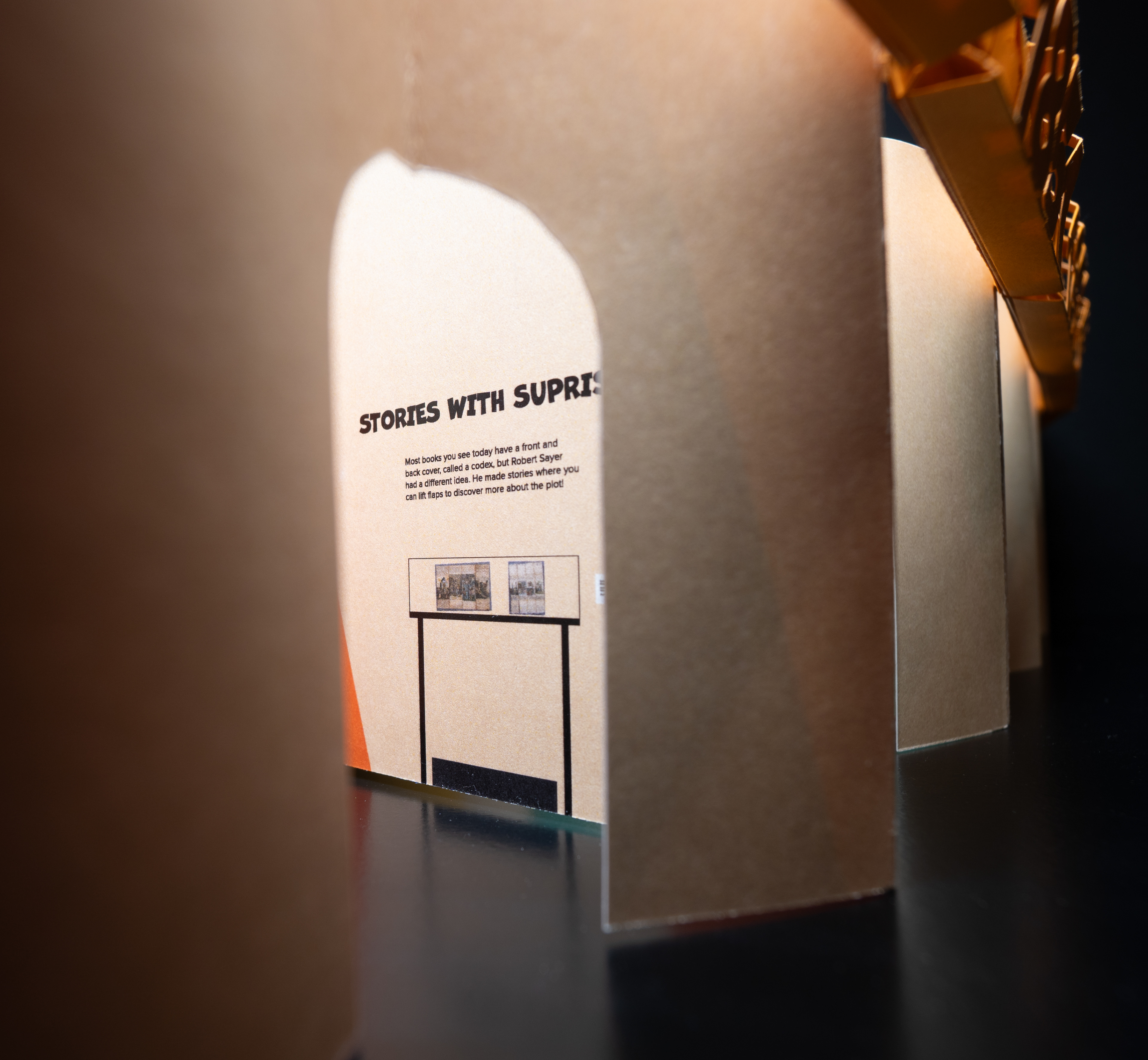
History for Kids
The exhibition’s target audience is elementary school children, ages 7–11. Because of this, everything in the exhibition is slightly shorter to accommodate their height. Each room is 10 feet tall and 8 feet wide, with the table standing at 30 inches.
As guests enter each room, diagonal stripes guide them to the right side, where a historic artifact is displayed on a table covered with plexiglass. There is also a brief explanation of the person most famously associated with that specific technique.
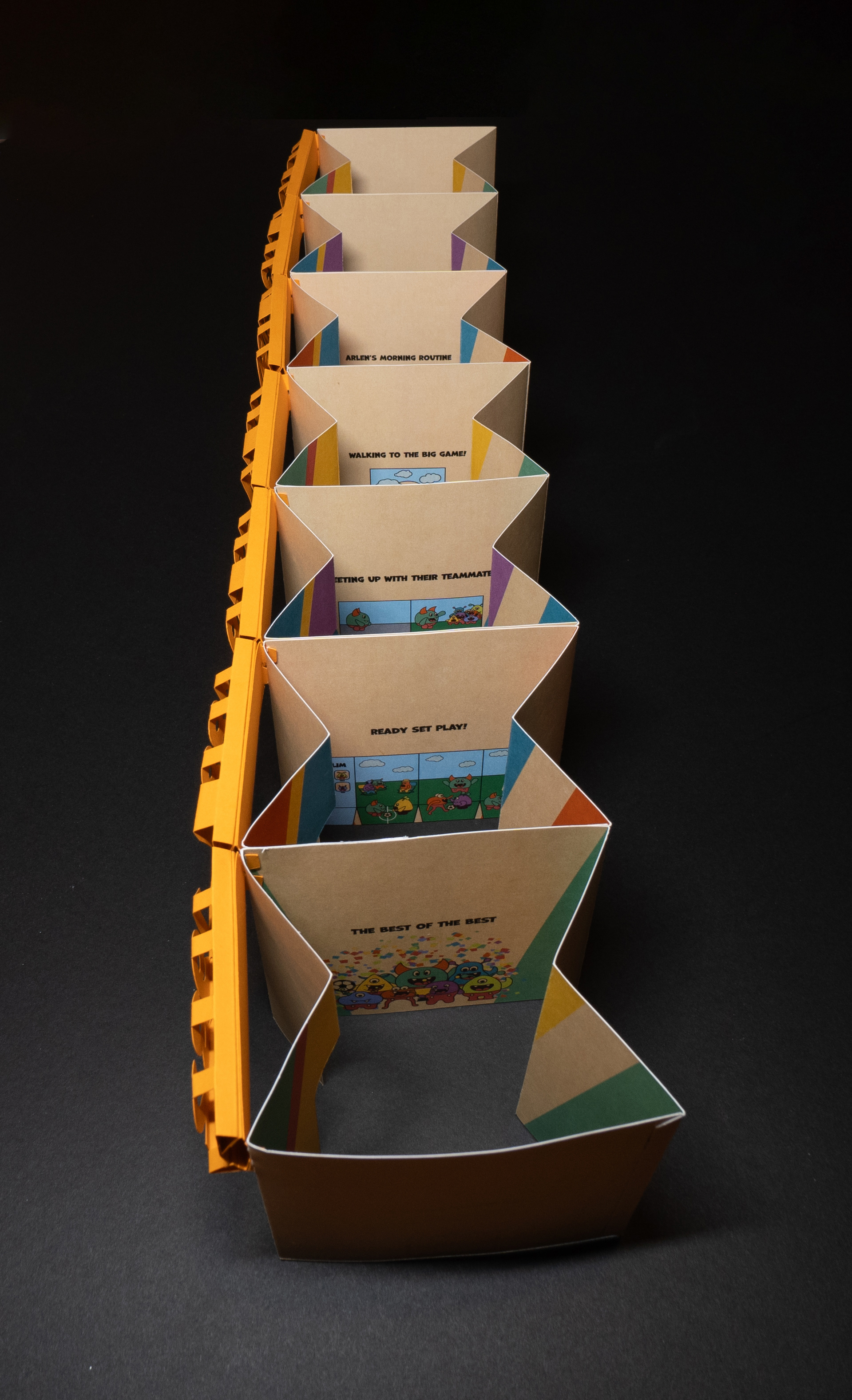
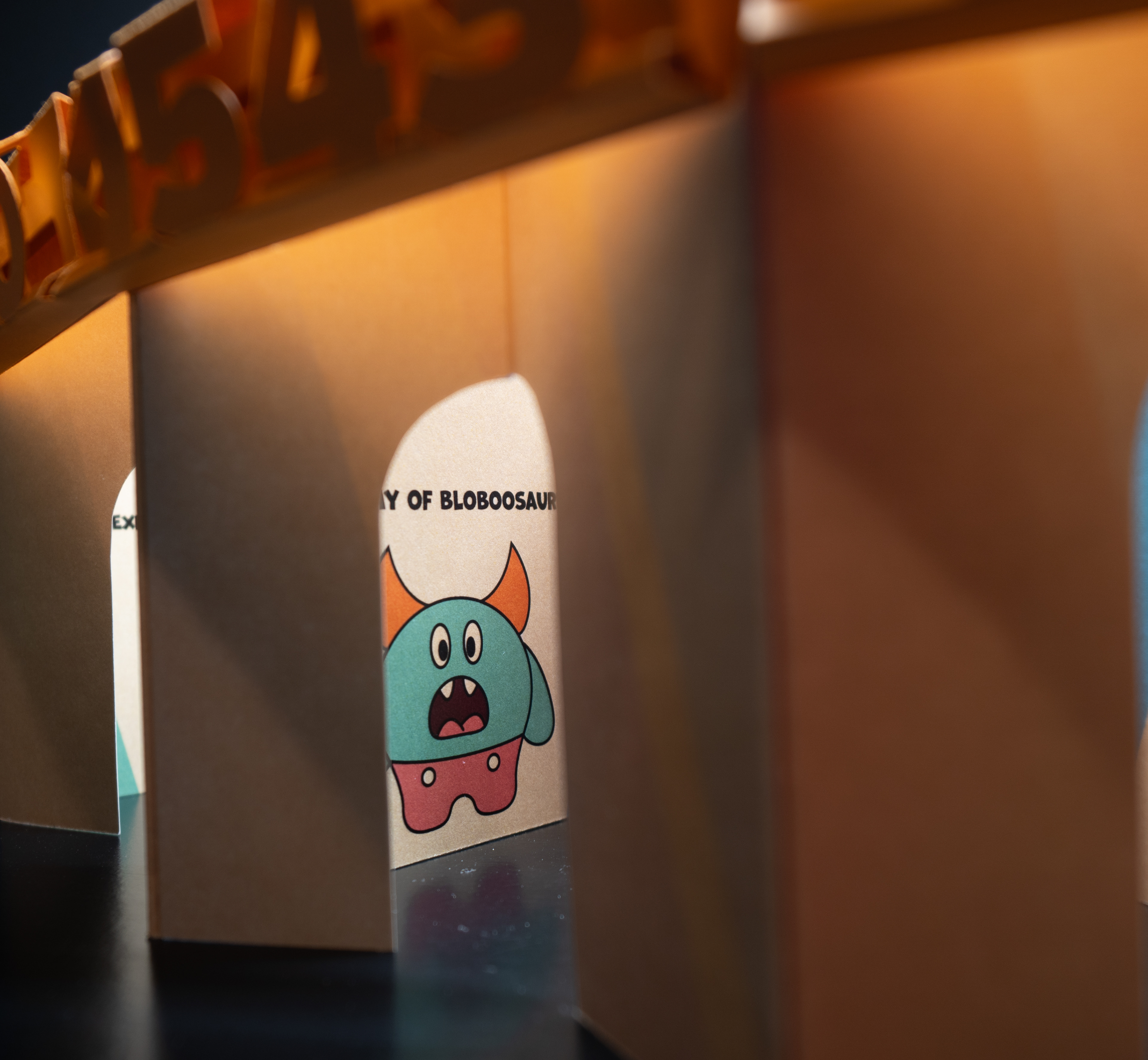
Who's Arlen?
On the other side of the room is an interactive area, where guests can engage with the pop-up element on a large scale. Rather than simply enlarging the artifact, visitors learn through a little monster character named Arlen.
Arlen’s day is part of a continuous storyline across the seven rooms. They are preparing for their soccer championship, and as guests explore each room, they will discover who wins.
1240
1543
1780
1851
1859
1887
1932
Interactive Element
These are small scale mockups of the interactive element on the left side of the room. Each element will be made with high density foam due to its lightweight and durability, and vinyl adhesives will be used for detailed printing.
Make Your Own!
At the end of the exhibition, guests can pick up a slip of paper to create their own pop up Bloboosaurus pamphlet. One side of the paper has printed directions, while the other side is left blank for guests to fill with their creativity.



